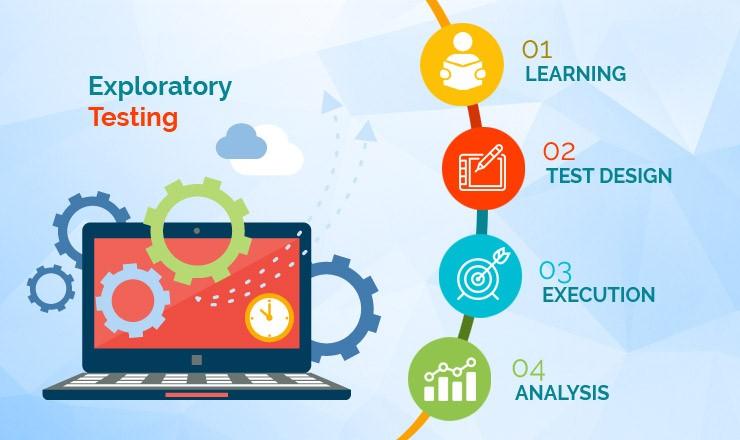Quick guide to Exploratory Testing
Bài đăng này đã không được cập nhật trong 6 năm

1. What does Exploratory Testing means?
The word exploratory testing refers to a technique of testing an application without any preparation or particular schedule. This test is formal testing where a skilled tester performs the investigation of bugs or errors. A tester has to identify the functionality of the application, whether it works properly or not, consequently applies his/her skill and ability for exploring the application and set the test scenarios for the higher execution as well. The best result of testing will be accompanied only if the tester knows more about the product and knows the different approaches to testing. It is a vital part of software testing and allows freedom to a tester for work.
Exploratory testing is simultaneous exploration, design and execution. That means a tester is not referring to any pre-designed test cases during exploratory testing. There are two aims in exploratory testing:
A – To learn about the system under test – Exploration.
B – To apply existing knowledge about the system under test to find bugs – Design and Execution.
Other characteristics of Exploratory Testing are:
- It is an interactive test process
- Using information gained while testing to design new and better tests
- Formal, which means it is different from error-guessing and ad-hoc testing
- Testers have skills to listen, read, think and report rigorously and effectively
2. When is Exploratory Testing Applicable?
Exploratory Testing is most applicable when:
- There is little or no specification is available
- Investigating a particular defect
- Investigating a particular risk – to evaluate the need for scripted tests
- There is no time to specify and script tests
- We want to diversify testing
3. How to Prepare for Exploratory Testing?
For preparing and executing exploratory tests, test charters are used with items like:
- What will be tested (scope)
- What will not be tested (out of scope)
- Why (questions to be answered)
- How (brainstorm)
- Expected problems
- Reference
4. How to Report Results of Exploratory Testing?
For describing the results of the exploratory tests, session sheets are used:
- Test coverage outline
- Name of the tester who performed the exploratory testing session
- Test execution log
- Defects found
- Quality indicator (number of major defects per hour)
- New risks encountered
- Issues, questions, anomalies
Ref:
http://www.professionalqa.com/
https://www.testingexcellence.com/
All rights reserved